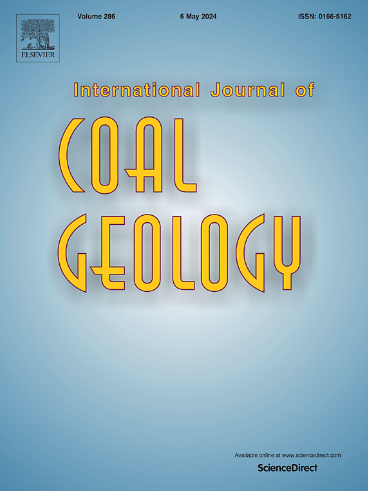Mitigating climate change by abating coal mine methane: A critical review of status and opportunities
IF 5.6
2区 工程技术
Q2 ENERGY & FUELS
引用次数: 0
Abstract
Methane has a short atmospheric lifetime compared to carbon dioxide (CO2), ∼decade versus ∼centuries, but it has a much higher global warming potential (GWP), highlighting how reducing methane emissions can slow the rate of climate change. When considering the contribution of greenhouse gas (GHG) emissions to current global warming (2010–2019) relative to the industrial revolution (1850–1900) levels, methane contributes 0.5 °C or ∼ a third of the total. The most recent post-2023 global estimates of methane emissions by bottom-up (BU) and top-down (TD) approaches for the coal mining sector are in the range of ∼41 ± 3 Tg yr−1 and 33 ± 5 Tg yr−1, respectively. This divergence, notwithstanding overlapping confidence intervals, is a result of differences between applied TD global inversion models and BU emission inventories. Further research can help to better refine emissions from the various contributing coal mine methane (CMM) emissions sources. The coal mining sector accounts for over 10 % of global anthropogenic methane emissions. The contribution of CMM emissions to the global budget have increased since 2000, although upward and downward regional trends have been observed.
The Global Methane Pledge (GMP), which was signed by more than 150 nations, aims to reduce methane emissions by 30 % from 2020 levels by 2030. This could eliminate 0.2 °C of warming by 2050. The success or failure to reach the emission reduction targets of the GMP will depend on engagement with different sectors of the economy. In that regard, the coal sector could play a significant role for mitigating emissions and reaching emission reduction targets. The International Energy Agency (IEA) and United States Environmental Protection Agency (U.S. EPA) both estimate that over half of global methane emissions from coal operations could be avoided with the application of existing technologies. However, setting up emission reduction scenario targets for the coal mining sector poses significant challenges, which require clear understanding of the magnitude and behavior of CMM emission sources. Notwithstanding regional differences, with improved reporting and data transparency, emission control potential can be more accurately defined, which can inform effective and defensible policy approaches.
This paper highlights the climate forcing role of methane in the atmosphere and presents a detailed review of CMM emission sources along the coal lifecycle, traditional and new inventory practices applied in different countries, the status of estimating CMM emissions, and opportunities and difficulties associated with mitigating emissions from different CMM sources. Different policy approaches utilizing regulatory and economic mechanisms are explored and concluding remarks for importance and tools of CMM emission mitigation are provided. Ultimately, this paper aims to inform global CMM mitigation and emission reduction scenario targets for the coal mining sector.
通过减少煤矿甲烷缓解气候变化:对现状和机遇的严格审查
与二氧化碳 (CO2) 相比,甲烷在大气中的寿命很短,只有十几年而不是几个世纪,但它的全球升温潜能值 (GWP) 却要高得多,这凸显了减少甲烷排放可以减缓气候变化的速度。与工业革命时期(1850-1900 年)的水平相比,如果考虑到温室气体(GHG)排放对当前全球变暖(2010-2019 年)的影响,甲烷的影响为 0.5 °C,占总量的三分之一。根据自下而上(BU)和自上而下(TD)的方法,对煤炭开采行业 2023 年后甲烷排放量的最新全球估计分别为 41 ± 3 Tg yr-1 和 33 ± 5 Tg yr-1。尽管置信区间有重叠,但这种差异是由于应用的TD全球反演模型和BU排放清单之间的差异造成的。进一步的研究有助于更好地完善各种煤矿甲烷 (CMM) 排放源的排放量。煤矿行业占全球人为甲烷排放量的 10% 以上。自 2000 年以来,煤矿甲烷 (CMM) 排放量对全球预算的贡献一直在增加,尽管已观察到区域性的上升和下降趋势。全球甲烷承诺(GMP)由 150 个国家签署,其目标是到 2030 年将甲烷排放量从 2020 年的水平减少 30%,这样到 2050 年就可以消除 0.2°C 的变暖。能否实现 GMP 的减排目标将取决于不同经济部门的参与。在这方面,煤炭行业可在减排和实现减排目标方面发挥重要作用。据国际能源机构(IEA)和美国环境保护局(U.S. EPA)估计,通过应用现有技术,可避免全球一半以上的煤炭业务甲烷排放。然而,为煤炭开采部门设定减排情景目标是一项重大挑战,需要清楚了解煤层气和甲烷排放源的规模和行为。本文强调了甲烷在大气中的气候强迫作用,并详细回顾了煤炭生命周期中的煤层气排放源、不同国家采用的传统和新的清单编制方法、煤层气排放估算现状,以及与减缓不同煤层气排放源相关的机遇和困难。本文探讨了利用监管和经济机制的不同政策方法,并对减缓煤层气排放的重要性和工具进行了总结。最后,本文旨在为全球煤矿部门的煤矿机械缓解和减排情景目标提供信息。
本文章由计算机程序翻译,如有差异,请以英文原文为准。
求助全文
约1分钟内获得全文
求助全文
来源期刊

International Journal of Coal Geology
工程技术-地球科学综合
CiteScore
11.00
自引率
14.30%
发文量
145
审稿时长
38 days
期刊介绍:
The International Journal of Coal Geology deals with fundamental and applied aspects of the geology and petrology of coal, oil/gas source rocks and shale gas resources. The journal aims to advance the exploration, exploitation and utilization of these resources, and to stimulate environmental awareness as well as advancement of engineering for effective resource management.
 求助内容:
求助内容: 应助结果提醒方式:
应助结果提醒方式:


